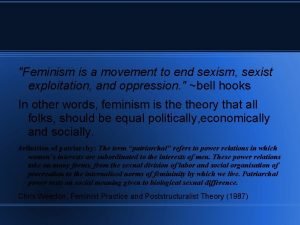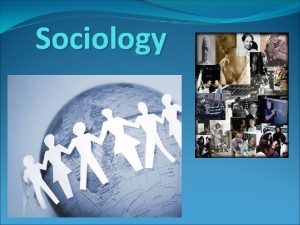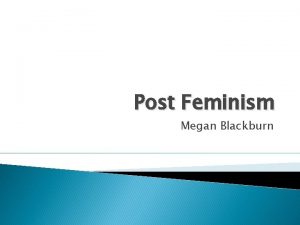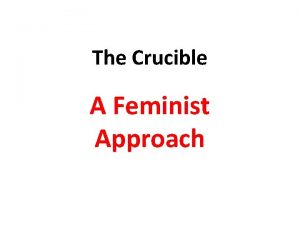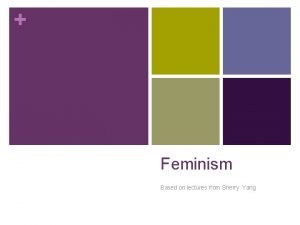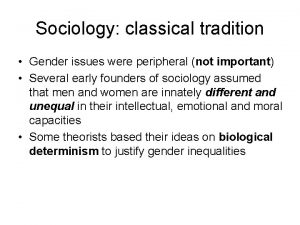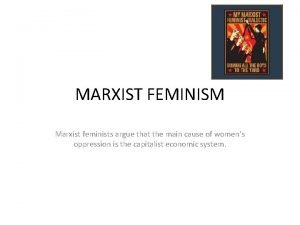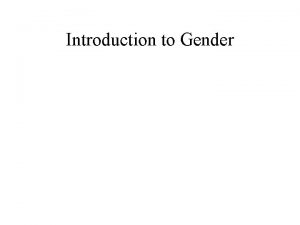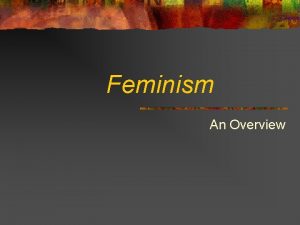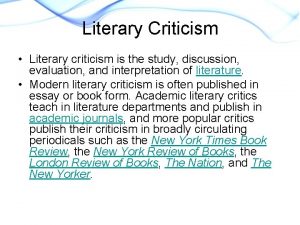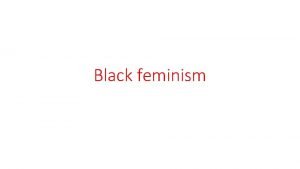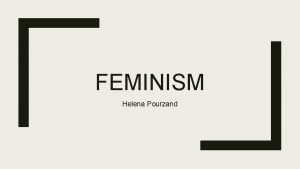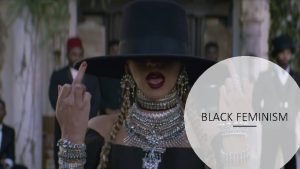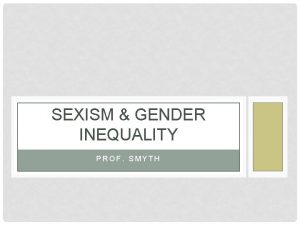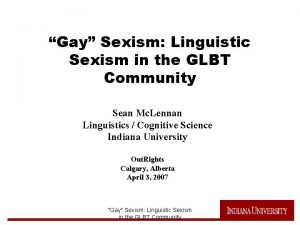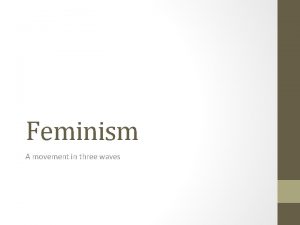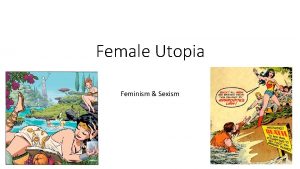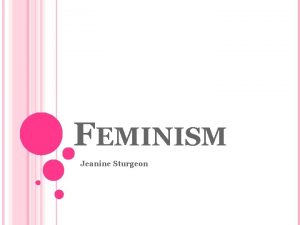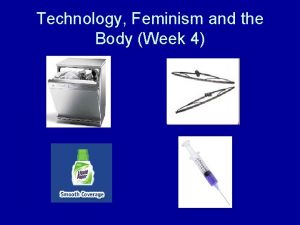Feminism is a movement to end sexism sexist




















- Slides: 20

"Feminism is a movement to end sexism, sexist exploitation, and oppression. " ~bell hooks In other words, feminism is theory that all folks, should be equal politically, economically and socially. definition of patriarchy: The term “patriarchal” refers to power relations in which women’s interests are subordinated to the interests of men. These power relations take on many forms, from the sexual division of labor and social organisation of procreation to the internalised norms of femininity by which we live. Patriarchal power rests on social meaning given to biological sexual difference. Chris Weedon, Feminist Practice and Poststructuralist Theory (1987)

Intersectionalities “The necessity of recognizing the many strands that make up identity. For example, the ways in which sexism and racism are intertwined in the identities of women of color. ” ~Kimberlé Crenshaw Intersectionality begins to address the flawed essentialist binary model though acknowledging that not all people's experiences are the same! The multiple axes of race, gender, age, sexuality, ability, and other representational systems with which each person associates results in every individual falling in a slightly different position along the multiple axes of social hierarchy. We develop our knowledge through living and experiencing life and the world around us, which affects and is affected by the identities we embody and perform. The reflexive relationships between perceptionsknowledge-self-experiences-society are constant and entwined; a single element of the relationship cannot simply be discarded.

Tom Ford for Gucci. Sunglasses, Spring 2008 (Ad banned in Italy)

Tom Ford for Gucci

Diesel Jeans (Spring 2009)

Sisley Ad (2007)

Pennsylvania's Liquor Control Board (Dec 2011, banned)

February 2011

Antonio Federici Italian Gelato Ad (Winter 2011)

Capriccio Ladies Hairdresser (2011, from Milan)

Pamela Anderson for PETA (July 2010, still on PETA's website. )

1. What factors in our lives influence our relationship with our own bodies? How do they influence us? How do you think our families, in particular, might influence our relationship with our own bodies? 2. According to U. S. based public culture, what is “beauty? ” How do these standards of beauty get inside our hearts and heads? What’s your own definition of beauty? 3. Do you think there is a link between class, advertising’s co-optation and trivialization of feminism and the resistance of many young folks to being identified as feminists? 4. What are some of the potential physical, emotional, and mental effects on members of our communities, who try to live up to our culture’s ideal image of beauty?

Tom Ford for Gucci

Jean Kilbourne states “turning a human being into a thing is almost always the first step toward justifying violence against that person. ” What do you think she means by this? Do you agree with her reasoning? Why or why not? Some people would argue that depicting a woman’s body as an object is a form of art. What is your opinion of this point of view? Explain your reasoning. How can her arguments be expanded to include the effects of new/social media? (You. Tube, Twitter, Facebook, Instagram, etc. ? )

Kilbourne explains that the consequences of being objectified are different – and more serious – for female bodied folks. Do you agree? How do objectified images of women interact with those in our culture differently from the way images of men do? Why is it important to look at images in the context of the culture?

Stuart Hall, “The Spectacle of the Other”




 Sexism in sexist photo
Sexism in sexist photo Sexism in schools
Sexism in schools Did postema fulfill her chief aspiration
Did postema fulfill her chief aspiration Romeo and juliet script balcony scene
Romeo and juliet script balcony scene Hardee's commercials sexist
Hardee's commercials sexist Jasmine and aladdin
Jasmine and aladdin 18+sex
18+sex Feminism in the secret life of bees
Feminism in the secret life of bees Principles of feminism
Principles of feminism Bourgeois feminism
Bourgeois feminism Feminist waves
Feminist waves What is post feminism
What is post feminism Feminism in the crucible
Feminism in the crucible What is feminism
What is feminism Radical feminism slideshare
Radical feminism slideshare Marxist feminism theory
Marxist feminism theory Snow white feminist criticism
Snow white feminist criticism Marxist feminism example
Marxist feminism example Postmodern feminism
Postmodern feminism Advantages and disadvantages of literary criticism
Advantages and disadvantages of literary criticism Similarities of formalism and structuralism
Similarities of formalism and structuralism
